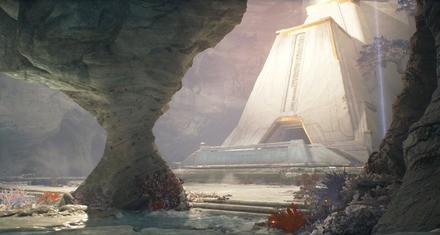
In this course, students will learn how to create a polished, industry-ready environment project that highlights their strengths to land a job at a AAA Game studio.
Guided by Alex Beddows, a seasoned environment artist at leading game studios, you’ll gain insights into what makes a portfolio stand out in a competitive field. Alex will walk you through how to choose the right projects, plan your work from start to finish, and understand the key phases of production. By the end, you’ll have the skills and structure to create an environment that meets professional standards and aligns with your career goals.
This course is for 3D environment artists ready to break into the Games industry and land their first job.
BENEFITS
-
Learn every step of what is needed to create a standout environment portfolio
-
Increase your chances of landing your first job in the game development industry
-
Learn from a veteran expert 3D environment artist
-
Receive personalized feedback and guidance on your work
-
Course content and Miro board access for 1-year
- Learn alongside your peers on a shared Miro board - see the feedback they receive to gain insights, spark new ideas, and refine your own creations
COURSE FORMAT
-
Pre-recorded lessons
-
Live Q&A sessions with instructor
-
Personalized feedback on assignments
-
Certificate of Completion delivered by Sierra Division
Week 1 - Planning The Destination
In week one, we will explore the different paths available for environment artists and debunk common misconceptions about creating personal art. This process helps clarify your end goal, providing a strong foundation for planning the upcoming project. By the end of the week, you'll have a set of clear criteria to guide your work and measure the project's success.
Week 2 - Concept And Project Planning
In week two, we will focus on selecting our concept or reference. Several criteria will guide this choice, including its viability in relation to your predefined goals and the overall scope of the project. Once the concept is chosen, we will walk through the high-level planning process, breaking down the key phases of a project and applying this framework to your own work.
Week 3 - Blockout
In week three, we will begin assembling our blockout in Unreal, adhering to professional practices by avoiding temporary assets. Every asset added will be intended for final use, allowing us to address fundamental assembly issues early on. During this phase, we will also block in cameras and lighting to ensure the overall composition aligns with the concept. This process will give us a clear checklist of assets to complete as we move forward as well as highlight potential problems we will need to solve.
Week 4 - Art Sheet (1st Pass)
In week four, we will begin refining our broad shapes by taking the blockout assets through a sculpting or modeling pass. This is a crucial stage where we focus on shape and form at the overall scene level, rather than just individual assets, while keeping albedo values in neutral greys. This stage is also a great chance to see if we missed any required assets in our original blockout. By the end of the week, all primary shapes should be represented in the environment.
Week 5 - Art Sheet (2nd Pass)
In week five, we will move to the next level of detail, focusing on secondary forms. During this stage, we’ll finalize our sculpts, bake out normal maps, and create detailed normal maps. We'll continue working in neutral grey values, ensuring that both primary and secondary forms are cohesive and that no additional detail is needed at the shape level.
Week 6 - Alpha
In week six, we’ll begin introducing albedo and roughness maps. Using masks, vertex painting, and decals, we’ll ensure that these values enhance the shapes we’ve created at the scene level. This is where the fun truly begins, as the scene starts to come to life with added texture and detail!
Week 7 - Lighting and VFX
In week seven, we’ll add the finishing touches with VFX and lighting. Until now, we’ve intentionally avoided color grading and post-processing to prevent relying on effects to enhance weak ideas. By introducing these elements at this stage, we elevate a good scene into a truly fantastic one. This is also our opportunity to fix bugs, errors and any last minute bits we may have missed throughout the process.
Week 8 - Cinematography / Posting
In week eight, we’ll focus on capturing our final renders. We’ll explore tips for composing the scene and sequencing shots to create the most impactful viewing experience. Additionally, we’ll plan our social media strategy, ensuring that our work is presented in a way that maximizes visibility and supports future career opportunities.
CLASS GOALS
-
For students to understand what the best pathway forward is for their careers
-
Understand how we plan projects and trust the process, skills that will help them in the industry
-
Learn the soft skills required to speak about their art in a professional capacity
WATCH ALEX'S AMA
- Teacher: Alex Beddows
